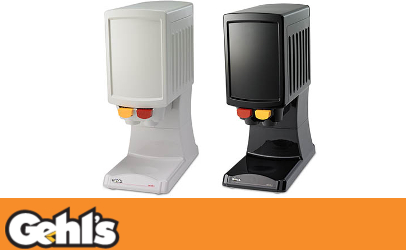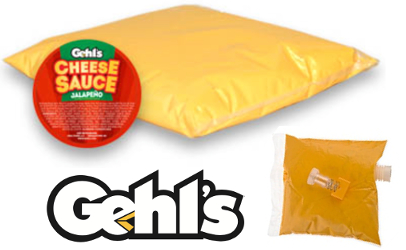 As victims of botulism poisoning traced to gas station nacho cheese continue to deal with severe health problems four and a half months after becoming ill, California health officials are trying to decide whether to fine the gas station owner.
As victims of botulism poisoning traced to gas station nacho cheese continue to deal with severe health problems four and a half months after becoming ill, California health officials are trying to decide whether to fine the gas station owner.
The illnesses began in late April. The California Department of Public Health (CDPH) began its investigation April 24. The department temporarily closed the Valley Oak Food and Fuel gas station in Walnut Grove, CA, in early May. The business reopened in less than a week. The CDPH has not taken any action against the business owner.
A department spokesman said Tuesday the CDPH is “reviewing the investigational findings to determine if any legal action will be taken.”
“The outbreak investigation has been closed. We are currently completing the investigation report and determining if any compliance actions will be issued to this retail location,” the department spokesman told Food Safety News.
The victims
Ten people were lab-confirmed victims of the outbreak. All required hospitalization. One person, a 37-year-old father of two, died. Nine of the victims had to spend time in intensive care units. Seven of the ICU patients had to be placed on ventilators because the botulism poisoning paralyzed muscles that are used for breathing.

One of the victims, Lavinia Kelly, who turned 33 on May 16, spent her birthday on a ventilator. She returned home recently after a long hospitalization followed by a stay at a rehabilitation facility.
The mother of three has recovered the ability to speak, but it is unknown if she will be able to work again. Her mobility and motor skills remain significantly impaired, according to her attorney, Bruce Clark, founding member of the Seattle law firm Marler Clark LLP.
Clark said Tuesday that the law firm is also representing two of the other living victims. They have filed civil suits against Valley Oak Food and Fuel in Walnut Grove, CA, and Wisconsin-based Gehl Foods Inc., the company that produced the cheese sauce and provided the dispenser to the gas station.
“Its (Valley Oak’s) insurance company has already tendered what it contends is the full policy to the court so that money can ultimately be divided among claimants,” Clark said Tuesday. “We dispute whether the policy is worth $1 million as the insurer, AmGuard, contends or $2 million as we contend. That is an issue of law that depends on the policy language and which will ultimately be decided by the court.”
Another of the victims is the gas station owner’s husband. It is believed he is still in the hospital.
Health department guidance
Though it has not yet completed its outbreak investigation report, the California Department of Public Health has developed new guidance for retailers regarding self-serve cheese dispensers:
“Management and employees should follow the instructions for each type of machine and product they use.”
The department developed that advice from reviewing inspection reports from early May, which included the observation that gas station customers themselves apply cheese sauce to their chips and other food “from a counter-top, self-service warming and dispensing unit.”
During the inspection, health officials also discovered several violations involving the gas station’s handling of the cheese sauce. Inspectors found the gas station employees were not following directions on dispensing unit, which was supplied by the cheese sauce manufacturer.
 Specific problems cited by inspectors included:
Specific problems cited by inspectors included:
- A 5-pound bag of nacho cheese collected at the retail location on May 5 was being used past the “best by” date;
- Records were not being maintained by the gas station employees indicating when bags of nacho cheese were originally added to the warming unit; and
- The plastic tool designed to open the bags of cheese, provided with the nacho cheese warming and dispensing unit, was not being used by employees.
“Management and employees should follow the instructions for each type of machine and product they use,” the department’s Sept. 6 guidance letter said. “These directions may include pre-heating and the length of time a product can remain at elevated holding temperatures. In some cases the product may only be held above 135 degrees F for 4 to 6 days.
“… Leftover nacho cheese sauce collected from the gas station yielded C. botulinum toxin type A bacteria and toxin. Due to the extensive distribution of the same lot code of nacho cheese throughout the United States without additional botulism cases, internal testing conducted by the Wisconsin manufacturer of the nacho cheese, and only a single bag of cheese linked to human illness, (state and local officials) suspect the nacho cheese was likely contaminated at the retail location.”
In addition to following directions on the cheese and dispensers, CDPH offered these points of guidance to retailers:
- Management should ensure that records are maintained indicating when bagged cheese was last changed. This may be accomplished by writing the date the product was added to the warmer on the bag itself.
- Management should ensure that the warming and dispensing units are not turned off at night or plugged into a timer. These types of machines need to remain “on” at all times. This will ensure that appropriate temperatures are maintained in this ready-to-eat food.
- Management and employees should ensure that any supplied tools for opening the bags of cheese are used per the product directions. These devices need to be washed, rinsed and sanitized between uses. In some cases these opening tools are only supplied with warming and dispensing unit.
- Management and employees should verify on a regular basis that the internal temperature of the hot cheese product is being held at the proper temperature. The internal temperature can be measured by placing the cheese product in a cup with a thermometer to verify the product is maintaining the minimum hot holding temperature of 135 degrees F as required under the California Retail Food Code or hot holding temperature as recommended by the manufacturer.
(To sign up for a free subscription to Food Safety News, click here.)
